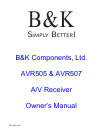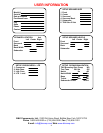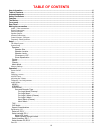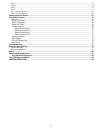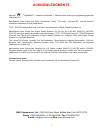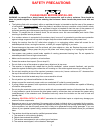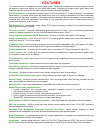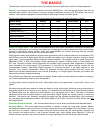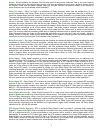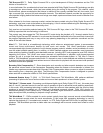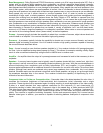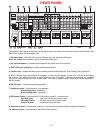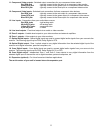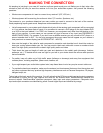
2
SAFETY PRECAUTIONS
PLEASE READ BEFORE INSTALLING
WARNING: to prevent fire or shock hazard, do not expose this unit to rain or moisture. Care should be
taken to prevent objects or liquid from entering the enclosure. Never handle the power cord with wet
hands.
• The lightning flash with arrowhead, within an equilateral triangle, is intended to alert the user of the presence
of uninsulated “dangerous voltage
” within the product’s enclosure that may constitute a risk of electric shock
to you. The exclamation point within an equilateral triangle is intended to alert the user of the presence of
important operating and maintenance (servicing) instructions in the literature accompanying the unit.
• Caution: To prevent the risk of electric shock, do not remove cover. No user-serviceable parts inside. Refer
servicing to qualified service personnel.
• If an outdoor antenna is connected to the antenna input, be sure it is grounded to provide some protection
against voltage surges and built up static charges. Keep the outdoor antenna away from power lines.
• Unplug the receiver from the AC outlet when plugging in or unplugging cables, when left unused for an
extended period of time, moving the receiver, or when you suspect lightning in your area.
• Prevent damage to the power cord. Do not bend, pull, place objects on, alter, etc. Replace the power cord if it
becomes damaged. Always grasp the plug on the power cord when plugging in or unplugging the receiver
from the AC outlet.
• Your system may produce sound levels capable of causing permanent hearing loss. Do not operate for
extended periods of time at high volume levels.
• Make sure the receiver is placed on a level surface.
• Protect the receiver from impact. (Do not drop it!!!)
• Do not climb on top of the receiver or place heavy objects on its top cover.
• The receiver is equipped with raised feet to provide ventilation, reduce acoustic feedback, and provide
protection against scratching the surface the unit is resting on. We advise against removing or altering feet.
• Do not stack anything on top of the receiver (processor, source, etc.) Leave a minimum of 3” clearance from
the top of the receiver to the next shelf (or component).
• The receiver should be located away from sources sensitive to heat.
• Do not perform any internal modifications to the receiver.
• Always connect the receiver’s power cord to an unswitched AC outlet for normal operation.
• If young children are present, adult supervision should be provided until the children are capable of following
all rules for safe operation.
• Do not plug the receiver’s power cord into an outlet with an unreasonable number of other devices. Be careful
if using extension cords and ensure the total power used by all devices does not exceed the power rating
(watts/amperes) of the extension cord. Excessive loads may cause the insulation on the cord to heat and
possibly melt.
• Mistaking CONTROL OUTPUT or IR INPUT connectors for audio/video inputs or outputs may damage your
receiver or other components.
• Damage can occur to your speakers if the power rating of each individual driver is exceeded by the receiver.
Ensure that all the drivers in your system are capable of handling not only the average power being delivered
by the amplifiers, but also the peak power that is likely to be generated during strong passages. If you are
unsure of your speaker's power rating, contact the speaker manufacturer or the dealer where you purchased
them.
• The receiver should be serviced by qualified personnel when:
A. The receiver is not functioning properly.
B. Objects have entered the chassis.
C. The receiver was exposed to rain or other type of moisture.
D. The receiver was dropped, or the chassis is damaged.



